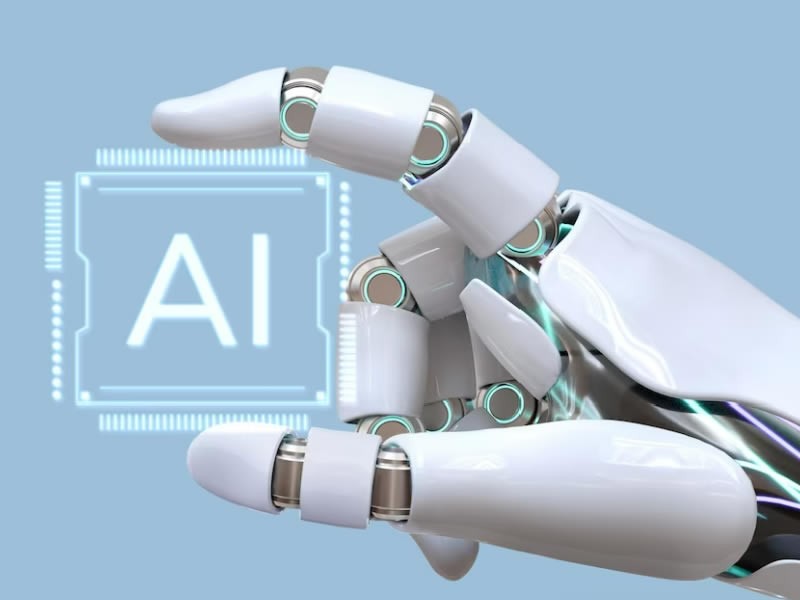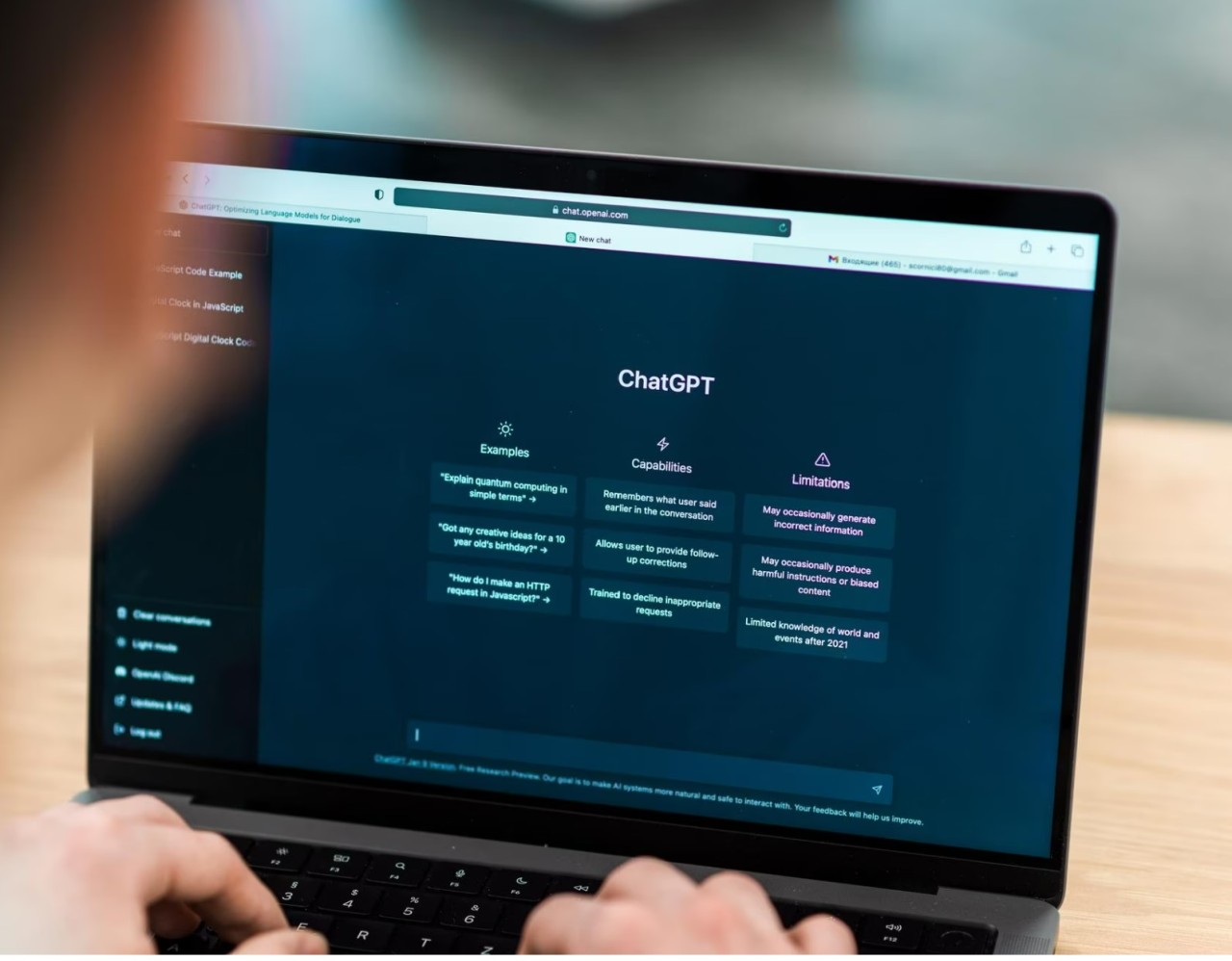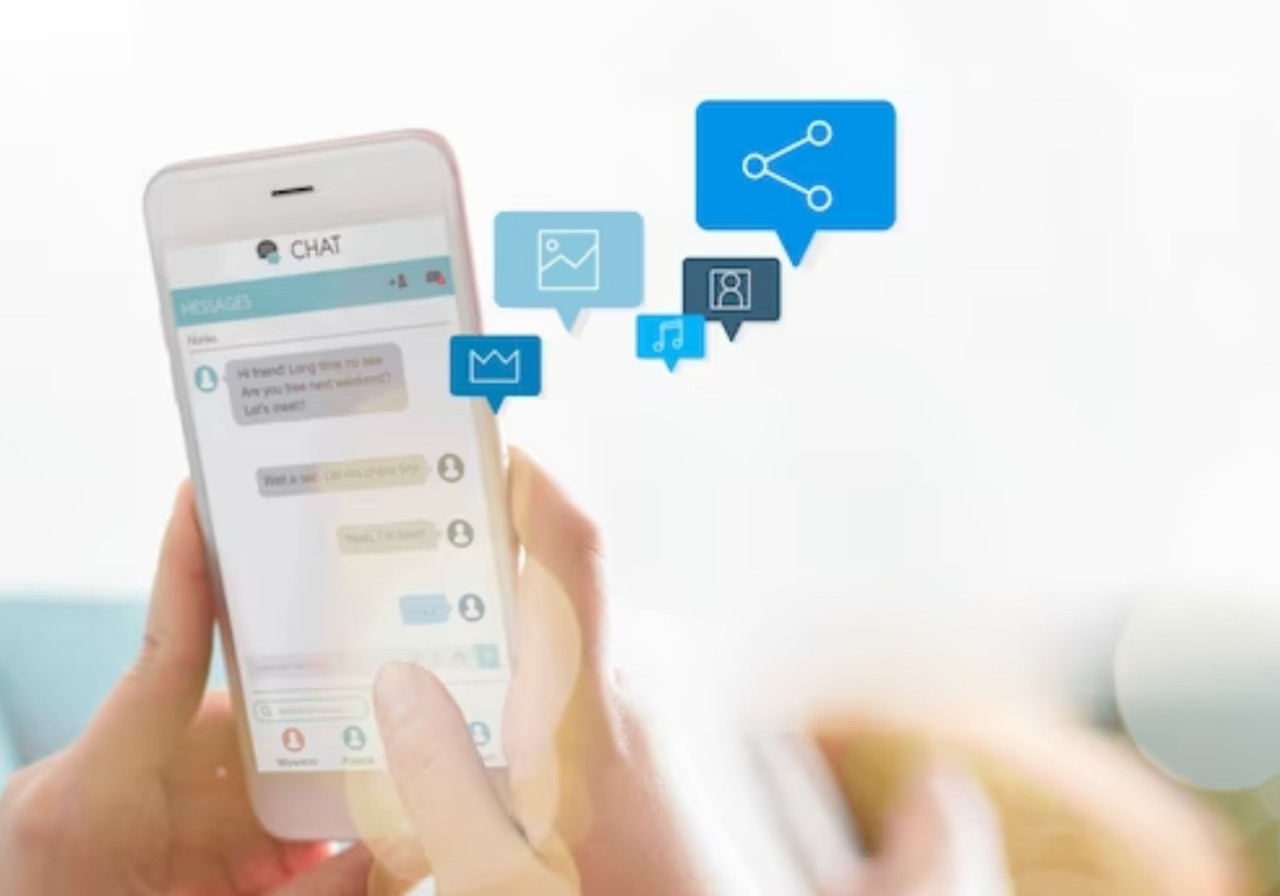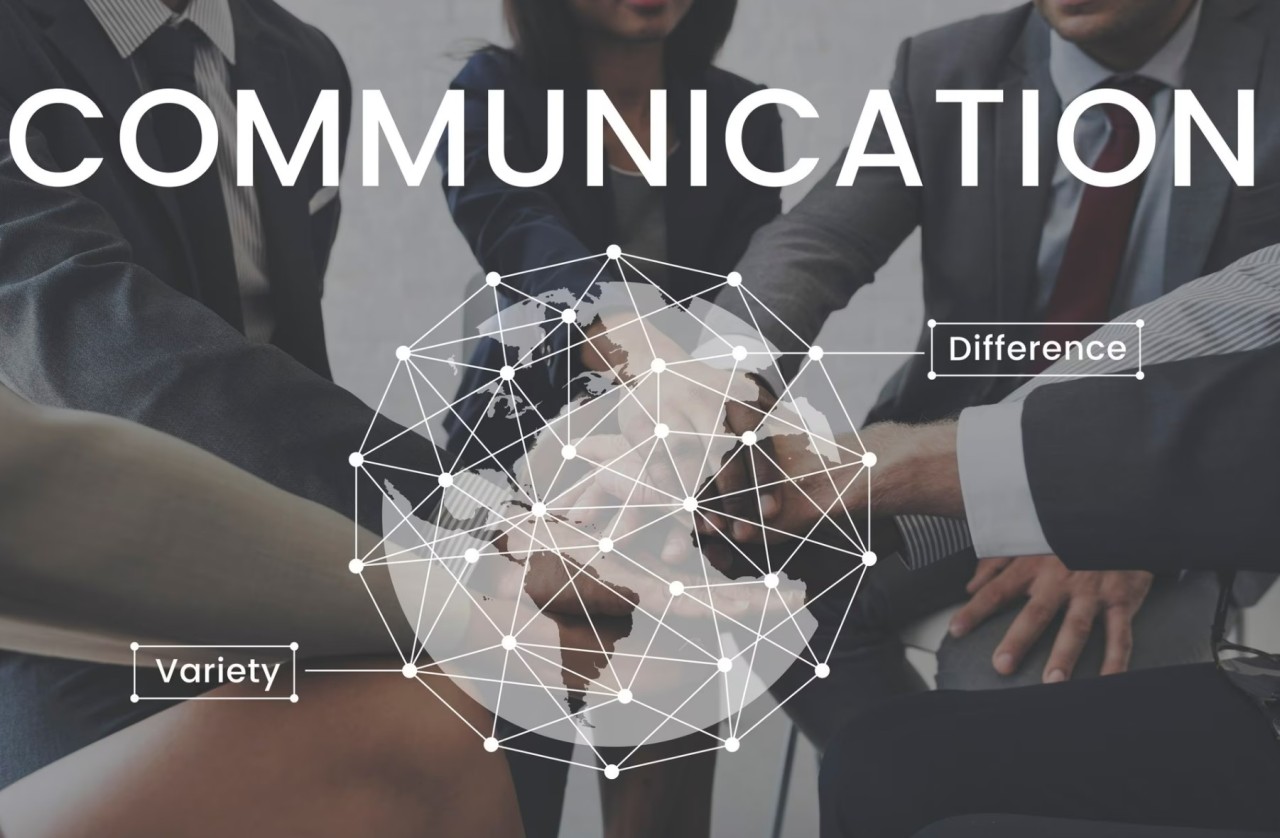Insight Blog
Agility’s perspectives on transforming the employee's experience throughout remote transformation using connected enterprise tools.
11 minutes reading time
(2295 words)
AI In Internal Communications – A Comprehensive Guide
AI has revolutionized the concept of employee engagement by providing innovative solutions to enhance workplace satisfaction and productivity.
Exploring AI in Internal Communications: The Role of Chatbots and ChatGPT. Artificial intelligence (AI) has become a widely recognized term since the emergence of ChatGPT.
It has also made its way into the field of communication, although there are skeptics.
A joint study conducted by KPMG and the University of Queensland, which surveyed approximately 6,000 individuals from five countries, revealed that only around a quarter of respondents have confidence in AI.
Another 42% accept its presence, while 28% simply tolerate it.
However, more than 70% of participants recognize the potential of AI in the workplace.
Efficient internal communication plays a crucial role in ensuring that all employees are aligned and maintaining a positive atmosphere within a company. In a survey conducted it was said that 70% of the 2000 respondents stated that they would consider quitting their jobs if they did not have access to powerful and fast communication.
This highlights the significance of internal communication, even though it can be time-consuming and resource-intensive.
The encouraging news is that this is precisely where artificial intelligence can lend a helping hand. So lets dig a bit deeper in to AI In Internal Communications.
What can AI help with when it comes to Internal communications?
AI can serve as a valuable tool to support internal communications, providing a creative boost and a wellspring of ideas for those experiencing a dearth of inspiration.
Moreover, it excels at presenting and elucidating intricate content in a simplified manner.
While extensive subjects often necessitate lengthy explanations, AI can swiftly generate concise summaries that encapsulate all vital and pertinent key points, thereby saving the reader precious time.
Another noteworthy function is the analysis of emotions conveyed through speech. In this context, artificial intelligence proves useful in discerning whether the individual on the receiving end is experiencing annoyance, happiness, or anger.
To achieve this, text analysis, voice input, sensors, and computer vision are all harnessed.
Utilizing this analysis, targeted and personalized actions tailored to the employee's mood can be implemented. In many instances, individuals from diverse cultures collaborate and communicate in different native languages.
AI can adeptly identify the native language and offer assistance with translation.
Conversational AI For Employee Engagement
AI has revolutionized the concept of employee engagement by providing innovative solutions to enhance workplace satisfaction and productivity.
Through sentiment analysis, AI systems can gauge employee emotions, enabling employers to address concerns promptly.
Personalized AI-driven communication platforms facilitate seamless collaboration, breaking down barriers and fostering engagement among team members.
Chatbots powered by AI offer instant support, answering employee queries and providing guidance, improving overall satisfaction. AI-driven performance evaluation tools track individual progress, identifying areas for improvement and recognizing achievements.
By leveraging AI for employee engagement, organizations can create a positive work environment, boost employee morale, and ultimately enhance productivity and retention.
Chatting has become an integral part of our daily lives, offering a seamless and effortless means of staying connected with people and accessing information.
From the moment we wake up and check our notifications to the end of the day when we make plans with loved ones, chatting has become our go-to method for communication.
This convenience and ease of communication can also be brought into the workplace.
The emergence of conversational AI has enabled companies to streamline their internal processes and enhance the overall employee experience through the use of a bot-human hybrid model.
Conversational AI For Employee Engagement has revolutionized the way businesses communicate and interact with their employees, spanning various areas such as IT helpdesk support and HR assistance.The COVID-19 crisis has accelerated the digital transformation of companies and the integration of Artificial Intelligence (AI) to a significant extent. Consequently, digital technologies have been widely adopted.
However, for companies to fully harness the benefits of digitization and AI, they must embrace new managerial practices that prioritize collaboration and cooperation. This entails moving away from traditional siloed approaches and shifting from a "Go digital" mindset to a "Be digital" mindset.
In fact, since the onset of the COVID-19 pandemic, conversational AI systems, including AI chatbots and voice assistants, have experienced an estimated 250% increase in the volume of interactions they handle across various industries (MarketWatch, 2022).
Conversational AI plays a crucial role in enhancing the employee experience by providing instant and personalized support.
Through chatbots, employees can easily ask questions or request assistance, receiving relevant answers promptly. If necessary, the chatbots can also escalate the issue to a human representative, ensuring a comprehensive support system.
What is ChatGPT when it comes to AI?
ChatGPT, an enhanced iteration of GPT-3, is currently available as a BETA/test version at no cost.
Following the conclusion of the BETA test, it may only be accessible through a subscription model. Consequently, numerous novel applications are anticipated to arise utilizing the capabilities of ChatGPT.
Hyperwrite, for instance, has already integrated ChatGPT into its service offerings.
One notable advantage of ChatGPT over its predecessor, GPT-3, lies in its improved comprehension of contextual information and ability to generate coherent text. However, it's important to note that ChatGPT's knowledge is limited to data up until 2021, as it has not been trained on more recent information.
Before employing ChatGPT for internal communication, several considerations should be taken into account.
It is crucial to exercise caution when sharing information and refrain from divulging sensitive data to the chatbot. With the fundamental aspects covered, let's explore the capabilities of ChatGPT.
Follow us and access great exclusive content everyday: Follow us on Google News
The purpose of ChatGPT
According to ChatGPT, its objective is to assist users by answering questions and offering personalized recommendations. Its primary aim is to aid users in quickly and effortlessly generating high-quality text that caters to their specific requirements.
With this broad purpose in mind, I was curious about what ChatGPT could offer as an internal communication professional. In this article, you will find several examples of how ChatGPT can be helpful in this role.
The following are a few ways in which ChatGPT can assist:
- Developing content for internal communication.
- Creating overviews, such as an overview of internal communication channels.
- Drafting a governance document for the Intranet.
- Providing suggestions for a social media policy.
Will AI Replace Internal Communications Jobs, and Why?
The impact of AI on internal communications jobs is a topic of debate and speculation.
While AI has the potential to automate certain tasks and streamline processes within internal communications, it is unlikely to completely take over these roles for several reasons.
- Human Connection - Effective internal communication often requires understanding and empathizing with employees. AI, at least in its current form, lacks the ability to truly understand human emotions, context, and cultural nuances. Human communication professionals are better equipped to build relationships, address concerns, and provide personalized support.
- Creativity and Strategy - Internal communications involve crafting compelling messages, developing communication strategies, and fostering employee engagement. These tasks require creativity, critical thinking, and strategic decision-making. While AI can provide data-driven insights, it cannot match human intuition and creativity in developing effective communication plans.
- Complex Interactions - Internal communications often involve complex and dynamic interactions, such as facilitating team collaboration, resolving conflicts, and managing change. These interactions require a nuanced understanding of organizational dynamics, individual personalities, and interpersonal relationships. AI may assist in certain aspects, but human judgment and emotional intelligence are crucial for navigating these complexities.
- Trust and Credibility - Employees often trust information delivered by human communicators more than information generated by AI. Human communicators can establish trust, credibility, and transparency, which are vital in fostering a positive internal communication environment.
- Ethical Considerations - AI raises ethical concerns around privacy, data security, and bias. Internal communications involve handling sensitive information, ensuring privacy compliance, and maintaining ethical standards. Human communicators are better positioned to navigate these ethical challenges and address them with empathy and integrity.
While AI can enhance certain aspects of internal communications, such as automating routine tasks, analyzing data, and improving efficiency, it is unlikely to replace human communicators entirely.
Instead, AI is more likely to be a tool that complements and supports human professionals in their roles, enabling them to focus on high-value tasks that require human judgment, creativity, and interpersonal skills
You may also like: Best Apps for Employees: UPDATED 2022 – A Complete Guide
ChatGPT & Internal Comms – All You Need To Know
In recent years, the field of internal communications has witnessed significant advancements with the emergence of artificial intelligence (AI) technologies, particularly in the form of conversational AI models like ChatGPT.
ChatGPT, developed by OpenAI, is a state-of-the-art language model that can simulate human-like conversations, providing valuable opportunities for internal communications professionals.
Here's all you need to know about the intersection of ChatGPT and internal comms.
- Enhanced Employee Engagement - ChatGPT can be employed to create interactive and engaging experiences for employees. It can facilitate two-way communication, answer queries, and provide real-time support, thereby fostering a sense of involvement and boosting engagement within the workforce.
- Personalized Communications - With its ability to generate contextually relevant responses, ChatGPT can deliver personalized messages to employees. It can tailor information based on individual preferences, roles, and needs, enhancing the relevance and effectiveness of internal communications.
- Automated Assistance - ChatGPT can automate routine tasks, freeing up internal communications professionals to focus on strategic initiatives. It can handle frequently asked questions, disseminate standard information, and even assist in onboarding processes, saving time and resources.
- Multilingual Support: In a globalized work environment, internal communications often need to transcend language barriers. ChatGPT's multilingual capabilities enable seamless communication with employees across different languages, fostering inclusivity and breaking down linguistic barriers.
- Data-Driven Insights - By analyzing vast amounts of data, ChatGPT can provide valuable insights to internal communications teams. It can identify communication patterns, assess sentiment, and offer recommendations for optimizing communication strategies, thereby driving continuous improvement.
- Consistent Messaging - ChatGPT ensures consistency in messaging across various communication channels. It can maintain a standardized tone, language, and brand voice, reinforcing the organization's identity and ensuring a unified employee experience.
- Limitations and Ethical Considerations - While ChatGPT offers numerous benefits, it's important to recognize its limitations. It may lack contextual understanding in certain scenarios and could inadvertently generate biased or inappropriate responses. Careful monitoring and human oversight are crucial to maintain ethical standards and ensure accurate communication.
By enabling interactive, personalized, and efficient communication, it enhances employee engagement, streamlines processes, and provides valuable insights.
Ai should be seen as a tool that complements human communicators, rather than replacing them.
The expertise, creativity, and emotional intelligence of internal communications professionals remain vital for establishing meaningful connections, addressing complex issues, and upholding the organization's values.
With a thoughtful and strategic approach, the integration of ChatGPT can undoubtedly strengthen internal communications and contribute to a more connected and informed workforce.
Future of Internal Communications
In the ever-evolving landscape of internal communication, trends emerge and shape the way organizations connect with their employees. One such trend expected to gain momentum in 2023 is the automation of recurring messages.
This involves leveraging technology, particularly chatbots, to streamline and enhance the internal communication process.
Internal communication teams play a vital role in disseminating information, addressing employee queries, and fostering engagement within an organization. However, they often face the challenge of managing a high volume of repetitive messages. These messages could range from frequently asked questions about company policies to requests for specific resources or assistance.
By implementing chatbots, internal communication teams can alleviate the burden of handling these repetitive messages manually. Chatbots are intelligent virtual assistants that can interact with employees and provide instant responses to their queries.
They can be programmed to understand natural language and respond in a conversational manner, offering a user-friendly experience.
One of the primary advantages of using chatbots for internal communication is their ability to direct employees to the information or resources they need.
For instance, if an employee wants to know about the company's vacation policy, they can simply ask the chatbot, and it will provide the relevant information instantly.
Similarly, if an employee needs assistance with accessing a specific software tool, the chatbot can guide them through the necessary steps.
The automation of recurring messages through chatbots brings numerous benefits to both employees and internal communication teams. Employees can receive instant responses to their queries, eliminating the need to wait for a human response or navigate through lengthy email threads.
This enhances productivity and ensures that employees have the information they need at their fingertips.
Additionally, chatbots free up valuable time for internal communication teams. Instead of spending hours responding to repetitive messages, they can focus on more strategic tasks such as crafting important announcements, planning employee engagement initiatives, or developing communication strategies.
To strike the right balance between automation and human touch in internal communication. While chatbots excel at handling repetitive and straightforward queries, there will always be cases that require human intervention.
It's crucial for organizations to provide clear pathways for employees to escalate issues or reach out to a human representative when necessary.
As organizations move towards the automation of recurring messages, they should also prioritize regular updates and maintenance of chatbots. Keeping the information up to date and continuously refining the chatbot's capabilities will ensure accurate and reliable responses to employee queries.
The automation of recurring messages through chatbots is poised to be a significant internal communication trend in 2023.
The power of technology, organizations can enhance efficiency, improve employee experiences, and empower internal communication teams to focus on strategic initiatives that drive organizational success.
Free ebook: How To Get Your Intranet Off The Ground
Categories
Blog
(2590)
Business Management
(318)
Employee Engagement
(204)
Digital Transformation
(172)
Intranets
(119)
Growth
(118)
Remote Work
(61)
Sales
(48)
Collaboration
(37)
Culture
(29)
Project management
(29)
Customer Experience
(26)
Knowledge Management
(21)
Leadership
(20)
Comparisons
(5)
Ready to learn more? 👍
One platform to optimize, manage and track all of your teams. Your new digital workplace is a click away. 🚀
Free for 14 days, no credit card required.















